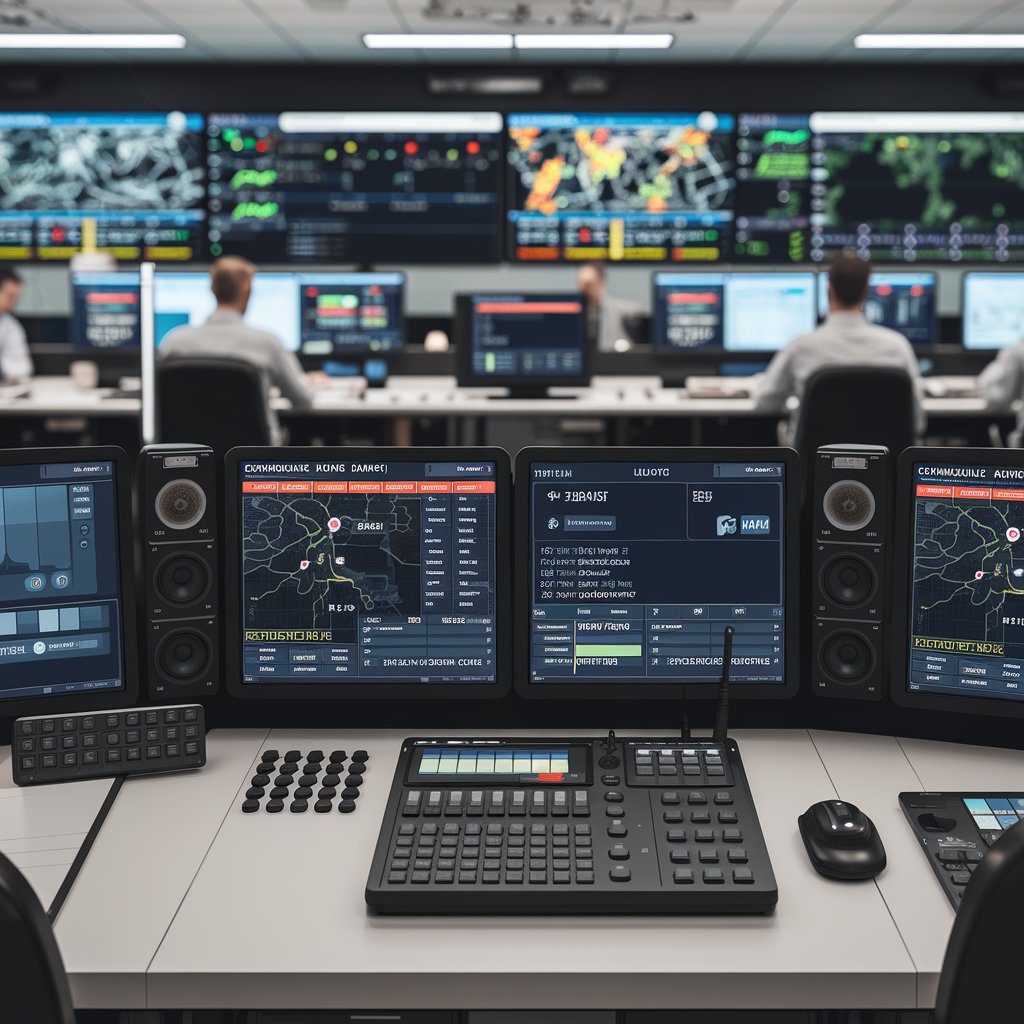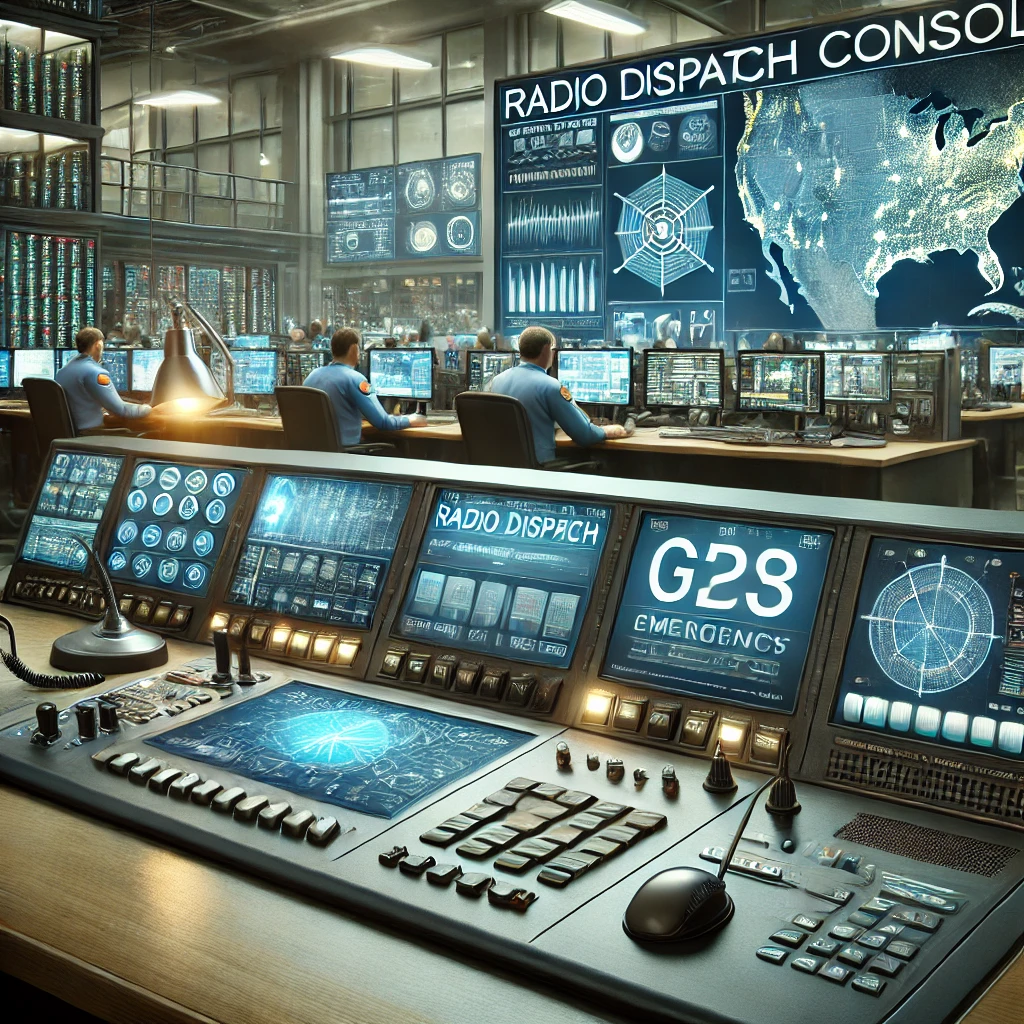Radio Dispatch Consoles: The Backbone of Modern Communication Systems

Understanding Radio Dispatch Consoles
A radio dispatch console, also known as a dispatch console system, is a centralized communication hub that allows operators to manage and coordinate radio communications across multiple channels and users. These systems are crucial in environments where rapid, clear, and organized communication is essential for safety, efficiency, and operational success.
Historical Context
The concept of radio dispatching dates back to the early days of radio communication. In the 1930s, police departments began using radio systems to communicate with patrol cars, marking the birth of modern dispatch systems. Over the decades, these systems have evolved from simple point-to-point radios to sophisticated, computer-aided dispatch consoles capable of managing complex communication networks.
Key Components of a Radio Dispatch Console
Modern radio dispatch consoles are complex systems comprising several key components:
- Control Interface: The physical console where dispatchers interact with the system, typically featuring:
- Touch screens or computer monitors
- Keyboards and mice
- Specialized buttons and knobs for quick access to functions
- Audio System:
- High-quality speakers for clear audio output
- Noise-canceling microphones for clear transmission
- Audio processing units for enhancing voice quality
- Radio Interface Unit: Connects the console to various radio systems, allowing communication across different frequencies and protocols.
- Computer System: Runs the dispatch software and manages the various components of the console.
- Network Infrastructure: Enables communication between the console and radio systems, often including:
- IP networks for digital communications
- Traditional analog connections for legacy systems
- Recording System: Captures and stores audio communications for legal and training purposes.
- Power Supply: Ensures uninterrupted operation, often with backup systems for critical applications.

Key Features of Modern Radio Dispatch Consoles
Today’s radio dispatch consoles offer a wide range of features designed to enhance communication efficiency and operator effectiveness:
- Multi-Channel Monitoring: Ability to monitor and manage multiple radio channels simultaneously.
- Patching and Cross-Patching: Connect different radio channels or systems to facilitate communication between disparate groups.
- Priority and Emergency Signaling: Highlight urgent communications and emergency calls for immediate attention.
- Integrated Mapping and GPS: Display the location of field units on interactive maps for better situational awareness.
- Call Queuing: Manage multiple incoming calls efficiently, prioritizing based on urgency or other criteria.
- Customizable User Interface: Tailor the console layout and functions to match specific operational needs.
- Voice Logging and Instant Replay: Record communications for later review and instantly replay recent transmissions.
- Interoperability: Communicate across different radio systems, frequencies, and protocols.
- Computer-Aided Dispatch (CAD) Integration: Seamlessly integrate with CAD systems for enhanced incident management.
- Telephony Integration: Incorporate telephone communications into the dispatch workflow.
- Text and Data Messaging: Send and receive text messages and data alongside voice communications.
- Automatic Vehicle Location (AVL): Track and display the real-time location of vehicles equipped with GPS.
Applications of Radio Dispatch Consoles
Radio dispatch consoles find applications across various industries and sectors:
1. Public Safety
- Law Enforcement: Coordinate police responses to incidents and emergencies.
- Fire Services: Manage firefighting operations and emergency medical responses.
- Emergency Medical Services: Dispatch ambulances and coordinate patient care.
2. Transportation
- Air Traffic Control: Manage aircraft movements and ensure flight safety.
- Railway Operations: Coordinate train movements and manage rail network operations.
- Public Transit: Manage bus and metro systems, ensuring smooth operations and responding to incidents.
3. Utilities
- Power Companies: Coordinate responses to outages and manage field technicians.
- Water and Gas Utilities: Manage infrastructure maintenance and emergency responses.
4. Industrial Operations
- Mining: Coordinate operations in large mining sites and ensure worker safety.
- Oil and Gas: Manage communications in refineries and offshore platforms.
- Manufacturing: Coordinate production lines and manage facility-wide communications.
5. Security Operations
- Campus Security: Manage safety and security in educational institutions.
- Corporate Security: Coordinate security personnel in large corporate facilities.
6. Event Management
- Concerts and Festivals: Coordinate staff and manage crowd control.
- Sports Events: Manage security and operations in large stadiums.
Types of Radio Dispatch Console Systems
1. Hardware-Based Consoles
Traditional systems with dedicated hardware components.
- Pros: Robust, purpose-built for dispatch operations.
- Cons: Less flexible, potentially more expensive.
2. Software-Based Consoles
Modern systems that run on standard computers.
- Pros: Flexible, easily upgradable, often more cost-effective.
- Cons: May require more IT support, potential security concerns.
3. Cloud-Based Dispatch Consoles
Emerging systems that leverage cloud technology for enhanced flexibility and scalability.
- Pros: Accessible from anywhere, easily scalable.
- Cons: Dependent on internet connectivity, potential data security concerns.

LTE Dispatch Consoles: The Next Generation
As radio technology evolves, LTE (Long-Term Evolution) dispatch consoles are gaining prominence. These systems leverage high-speed cellular networks to provide enhanced capabilities:
- Broadband Data Capabilities: Support high-speed data transmission alongside voice communications.
- Enhanced Multimedia Support: Ability to send and receive images, videos, and other rich media.
- Improved Coverage: Utilize widespread cellular networks for extended operational range.
- Interoperability: Seamlessly integrate with traditional radio systems and other communication platforms.
- Scalability: Easily add new users or expand coverage without significant infrastructure changes.
- Cost-Effectiveness: Potentially lower infrastructure costs compared to traditional radio systems.
Challenges and Considerations
While radio dispatch consoles offer numerous benefits, there are challenges to consider:
- Interoperability: Ensuring communication across different radio systems and frequencies.
- Security: Protecting sensitive communications from interception or interference.
- Training: Ensuring operators are proficient in using complex console systems.
- Technology Evolution: Keeping up with rapidly advancing communication technologies.
- Reliability: Maintaining system uptime in critical operations.
Cost: Balancing the need for advanced features with budget constraints.

Future Trends in Radio Dispatch Console Technology
The field of radio dispatch is continually evolving. Here are some trends shaping its future:
- Artificial Intelligence Integration: AI-powered assistants to help dispatchers manage complex situations.
- Enhanced Data Analytics: Advanced tools for analyzing communication patterns and operational efficiency.
- Augmented Reality Interfaces: AR displays to provide dispatchers with immersive situational awareness.
- 5G Integration: Leveraging 5G networks for ultra-fast, low-latency communications.
- Internet of Things (IoT) Connectivity: Integrating data from IoT sensors for enhanced situational awareness.
- Voice Recognition and Natural Language Processing: Improved voice control and automated transcription capabilities.
- Cybersecurity Enhancements: Advanced security measures to protect against evolving cyber threats.
Choosing the Right Radio Dispatch Console
Selecting the appropriate radio dispatch console for your organization requires careful consideration of several factors:
- Operational Needs: Assess your specific communication requirements and workflow.
- Scalability: Ensure the system can grow with your organization’s needs.
- Interoperability: Verify compatibility with existing communication systems.
- User Interface: Evaluate the ease of use and customization options.
- Reliability and Redundancy: Assess the system’s failover capabilities and backup options.
- Support and Maintenance: Consider the availability of technical support and ongoing maintenance.
- Cost: Evaluate both initial investment and long-term operational costs.
- Compliance: Ensure the system meets relevant regulatory requirements.
Implementing a Radio Dispatch Console System
Successful implementation of a radio dispatch console system involves several key steps:
- Needs Assessment: Thoroughly analyze your organization’s communication requirements.
- System Design: Develop a comprehensive design that addresses your operational needs.
- Vendor Selection: Choose a reputable vendor with experience in your industry.
- Installation and Integration: Carefully plan and execute the system installation, ensuring minimal disruption to operations.
- Testing: Conduct thorough testing of all system components and features.
- Training: Provide comprehensive training to all users, including dispatchers and field personnel.
- Go-Live and Support: Plan a phased rollout if possible, with adequate support during the transition.
- Continuous Improvement: Regularly review system performance and user feedback for ongoing optimization.
Conclusion: The Future of Coordinated Communications
Radio dispatch consoles remain at the heart of critical communication systems across various industries. As technology continues to evolve, these systems are becoming more sophisticated, offering enhanced features, improved interoperability, and greater flexibility.
From traditional hardware-based systems to emerging cloud and LTE-based solutions, radio dispatch consoles are adapting to meet the changing needs of modern organizations. By leveraging advanced technologies like AI, IoT, and 5G, these systems are poised to provide even more powerful tools for coordinating operations and managing critical communications.
As organizations look to upgrade or implement new dispatch systems, it’s crucial to carefully assess their needs, consider future requirements, and choose solutions that offer the right balance of functionality, reliability, and scalability. With the right radio dispatch console in place, organizations can enhance their operational efficiency, improve response times, and ultimately, better serve their communities or customers.
While this article has focused on traditional radio dispatch consoles, it’s worth noting that modern dispatch solutions are increasingly integrating various communication technologies. Companies like Linbis are at the forefront of this integration, offering flexible dispatch solutions that can complement or enhance traditional radio systems. These integrated platforms provide a unified interface for managing multiple communication channels, including radio, cellular, and data networks, further streamlining dispatch operations across various industries.
